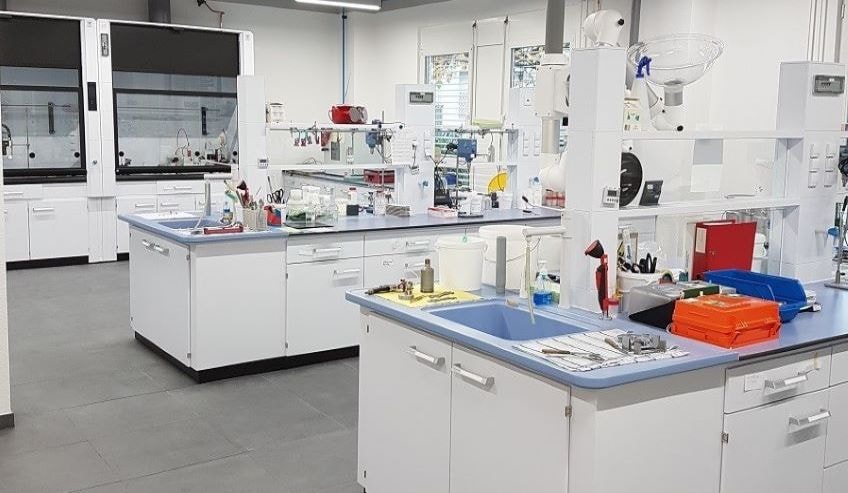
The Glue Talk Blog

World War I began the first period in time where adhesives were studied scientifically, as a search to discover stronger bonds for aircraft parts became relevant when carpenter’s glue proved increasingly ineffective. Since that time of global urgency to develop effective glues, several methods have emerged to create better performing adhesives to meet increasing demand for new applications.
Applications for Adhesives
There are an increasing number of applications for adhesives. In rail cars for public transit, adhesives replace metal fasteners and provide sound damping and anti-vibration properties, so commuters have a quieter and smoother ride. In the automotive industry, adhesives increase the flexibility of vehicles in motion, ensuring structural integrity even under high stress. In the medical industry, special adhesives can seal wounds and prevent infection so patients can rest assured they can recover from injury or procedure. The new ways in which adhesives can be applied will only continue to grow.
Types of Adhesion
Bonding results from several mechanical, physical, and chemical actions that can overlap and affect one another. Mechanical adhesion occurs when porous and uneven parts of two surfaces bond. Electrostatic adhesion occurs when a difference in electrically charged materials join forces. Chemical bonding happens when a variety of different material types bond together by the chemical energy of the fittings.
Mechanical Interlocking
Adhesion works best when the materials combined have pores, crevices, or uneven surfaces. These conditions help lock the materials together mechanically to create a strong new structure.
Adsorption
The most important feature in adhesion is adsorption, and it results when two materials that contact one another bond on a molecular level by a thin film.
Diffusion
When two materials are adhered by diffusion, particles blend together and combine to form a bond.
Electrostatic Adhesion
This type of adhesion happens when two positively and negatively charged materials attract one another and exchange electrical forces to band together.
Chemisorption Adhesion
In this adhesion, chemical energies, usually by heat, join together and form a strong bond between different material types.
Types of Adhesives
Structural Adhesives
Pressure resistant and high-performing, structural adhesives greatly strengthen the integrity of components. These adhesives are primarily used to support heavy loads without losing shape. Structural adhesives are designed to survive the length of the application for which they are used.
Types of structural adhesives include:
- Epoxies
- Polyurethanes
- Cyanoacrylates
- Modified acrylics
Non-Structural Adhesives
Non-structural adhesives, by nature, hold lightweight to moderate loads and often degrade over time. These adhesives are used as short-term fasteners and have a low temperature and chemical exposure resistance. The benefits of these temporary adhesives include vibration damping, sufficient sealing, and insulating qualities.
Pressure Sensitive Adhesives
Pressure sensitive adhesives (PSAs) are aggressively and permanently tacky at room temperature. PSAs adhere firmly to a variety of different surfaces upon contact without the need for more than hand or finger pressure.
Three categories of PSAs are:
- Solvent-based adhesives The major component of these adhesives are elastomers, which provide an elastic period. The materials adhered, also called the substrates, bond effectively when wet.
- Water-based adhesives Water-based adhesives can be a suspension in water or dissolved in water. These bonding agents cost less, cannot combust, and have low toxicity. However, low resistance to moisture limits uses, especially on plastic or substances that do not mix with water.
- Hot melt adhesives Thermo plastic rubbers in these adhesives ensure tolerance and performance in high temperatures. Even at lower temperatures, the integrity of hot melt adhesives remains steady.
Our Expertise Is Your Advantage
Adhesive technology advances at a rapid pace. At H.B. Fuller, we strive to lead with the latest technologies to ensure your products are more efficient, reliable, and effective. Our dedicated teams of customer support representatives can help you narrow down the product that is right for your specific application.
Contact us to find out how we can help construct better assemblies that can lower costs and boost performance.
Blog Categories
Blog Categories
Archive
- 2024
- 2023
-
2022
- February (4)
- March (3)
- April (1)
- May (2)
- June (5)
-
August (6)
- Beverage Labeling Market In Africa: A Huge Potenial
- H.B. Fuller’s Glue House: Scavenger Hunt
- Increasing Global Aging Population: Impacts and Challenges
- Innovations and Key Challenges in Sustainable Disposable Absorbent Hygiene Products
- Supporting Racial Equity in Our Community
- Top 5 Reasons to Invest in H.B. Fuller
- September (4)
- November (2)
- December (2)
-
2021
- January (3)
-
February (7)
- Celebrating Exceptional Service During COVID-19 Complications
- Cyanoacrylates: What They Are and What They Do
- Innovative two-shot bookbinding adhesive
- Make a Difference 2020
- Problem Solving: Paper straws in drinking beverages
- Stronger straws
- Substances of Interest in Disposable Absorbent Hygiene Products
- March (4)
- April (4)
- May (4)
- June (5)
- July (2)
- August (5)
- September (2)
- October (1)
- November (3)
- December (2)
-
2020
- January (4)
- February (2)
- March (3)
- April (4)
- May (3)
-
June (7)
- Community Support in the Era of Coronavirus
- Employee Creates Face Shields with 3D Printer
- Improved Packaging Integrity and Greater Customer Satisfaction
- Liquid-Resistant Paper Straws
- What is a Sealant
- What Is the Future of Commercial Disinfectants
- Winning over consumers with e-commerce packaging solutions
-
July (6)
- Employees Take Action to be Part of Healing and Growth
- Gain a competitive advantage with packaging adhesive solutions
- HB Fuller Company Foundations Commitment to Communities
- Packaging Solutions for the South African Agriculture Market
- Supporting Organizations That Provide STEM Education for Youth
- Where Does Sustainability Stand Amid COVID-19
- August (3)
- September (2)
- October (4)
- November (2)
- December (4)
